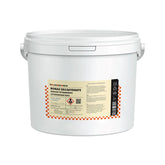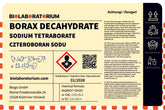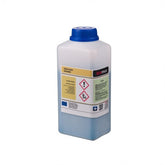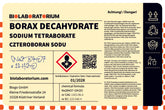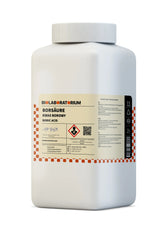Aniline – Versatile Molecule with Industrial Significance
Aniline, also known as benzenamine or phenylamine, is an important organic molecule with a wide range of industrial applications. As an aromatic amine, it plays a central role in the production of dyes, plastics, pharmaceuticals, and other chemical products. In this blog post, we will take a closer look at the properties, uses, and safety aspects of aniline.
Chemical Properties of Aniline
Aniline, with the chemical formula C6H5NH2, is a colorless to slightly brownish liquid with a characteristic, slightly unpleasant odor. It has a melting point of approximately -6°C and a boiling point of 184°C. Aniline is only moderately soluble in water but is well soluble in most organic solvents such as ethanol, ether, or benzene.
The molecular structure of aniline consists of a benzene ring to which an amino group (NH2) is attached. This combination of aromatic hydrocarbon and amino group gives aniline its characteristic chemical properties. For example, it is a weak base that can form salts with acids.
Industrial Applications of Aniline
Aniline is a versatile molecule with numerous industrial uses. One of the main application areas is the production of dyes and pigments. Aniline serves as a starting material for the synthesis of azo dyes, indigo dyes, and other important colorants. These are used in the textile, paper, and plastics industries.
Furthermore, aniline plays an important role in the production of plastics such as polyurethanes. Here, it is used to produce diisocyanates, which in turn are used in the manufacture of foams, paints, and adhesives.
In pharmaceuticals, aniline is used as an intermediate in the synthesis of various medications, such as paracetamol, sulfonamides, and some local anesthetics.
Further application areas of aniline include the production of rubber chemicals, pesticides, explosives, and even as a fuel additive in the automotive industry.
Safety Aspects of Aniline
Although aniline is versatile, great caution must be exercised during handling and processing. Aniline is toxic and can be harmful to health if inhaled, swallowed, or upon skin contact. It can lead to headaches, nausea, dizziness, and loss of consciousness. Long-term exposure can even cause damage to the blood, liver, and kidneys.
For this reason, strict safety measures must be followed when working with aniline. These include wearing protective equipment such as gloves, safety glasses, and respiratory masks, ensuring good ventilation of the working environment, and proper disposal of waste. Additionally, workplaces should be regularly checked for aniline contamination.
Conclusion
Aniline is a versatile organic molecule with numerous industrial applications. As an aromatic amine, it plays an important role in the production of dyes, plastics, pharmaceuticals, and other chemical products. However, handling aniline requires special safety measures due to its toxicity to prevent health damage. Through responsible handling and compliance with safety regulations, aniline can continue to play an important role in the chemical industry.

